Introduction: Storage Ensures Cookware Longevity
Proper storage is critical to maintaining the performance and appearance of triply cookware. Whether you’re storing a heavy-duty skillet or a versatile saucepan, how you store your cookware can significantly affect its durability, appearance, and functionality. But why does storage matter so much for triply cookware, and how can consumers ensure they’re taking the best care of their investment?
By using appropriate storage methods, consumers can protect their triply cookware from scratches, warping, and damage, ensuring it continues to perform well for years.
Let’s dive into the importance of proper storage for preserving the quality of your triply cookware.
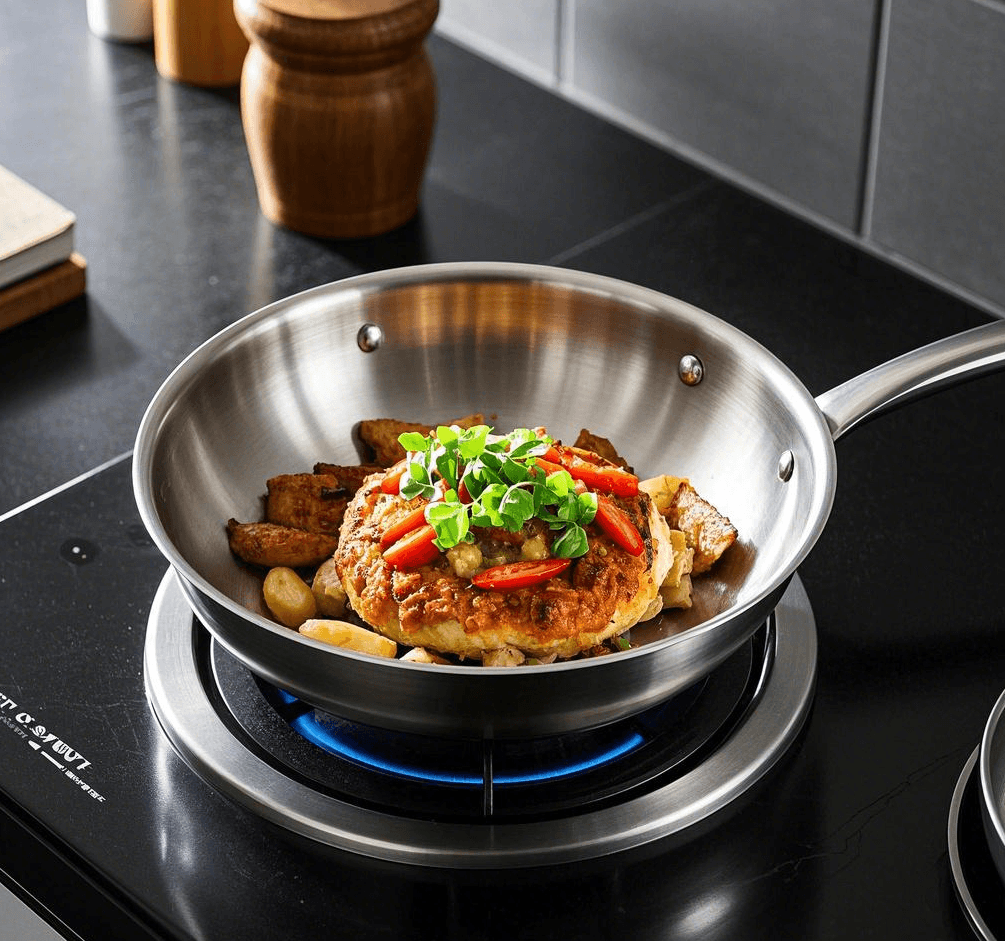
How Does Proper Storage Prevent Scratches and Surface Damage?
One of the most significant risks to the longevity of triply cookware is surface damage, particularly scratches that can occur during storage.
- Use of Cookware Protectors: To prevent scratches on the cooking surface, especially on non-stick or polished triply pans, consider using pan protectors or cloth liners between stacked items. These act as buffers that prevent direct contact between surfaces, which could lead to scratches or damage over time. Learn more about protecting your cookware.
- Avoiding Abrasive Materials: Storing cookware in a way that prevents contact with harsh or abrasive materials, like metal utensils or rough kitchen towels, is also crucial. These can scrape the surface and potentially damage the non-stick or polished coating, affecting performance. Read about common mistakes when using triply cookware.
- Non-Sticky Storage: Storing your cookware without food residue also helps prevent potential stains or buildups that may damage the surface. Regularly wiping the cookware clean and storing it dry can minimize any risk of surface wear.
Proper storage prevents contact between surfaces, avoiding scratches, stains, and other damage that could compromise cookware quality.
How Does Proper Storage Help Avoid Warping and Deformation?
Warping and deformation are common issues with cookware that’s stored improperly, particularly when subjected to extreme heat or uneven pressure.
- Stacking Cookware Safely: Triply cookware, especially larger pans and pots, should be stored in a way that ensures no unnecessary weight is placed on them. For example, stacking smaller pans inside larger ones is fine, but make sure they are cushioned and not placed under heavy items that could warp the metal.
- Avoiding High Heat Storage Areas: Storing cookware near heat sources, such as stovetops, ovens, or radiators, can lead to temperature fluctuations that cause warping. Keeping cookware in cool, dry cabinets away from direct heat ensures that it maintains its shape and functionality. Discover more tips on storing stainless steel cookware.
- Proper Lid Placement: When storing pots with lids, consider storing lids separately or placing a protective layer between the pot and the lid. Pressing lids onto pots too tightly or storing them at odd angles can create stress points that may lead to deformed lids or warped rims.
By stacking cookware carefully and avoiding heat exposure, you prevent the warping of triply cookware, ensuring it retains its shape and cooking efficiency.
How Does Storing Cookware with Lids Impact Its Longevity?
Storing cookware with lids in place can sometimes create additional pressure or cause damage if not done correctly.
- Separate Lid Storage: For optimal care, consider storing lids separately to avoid stress on the rim of your cookware, especially if you stack multiple pots and pans. Even small pressure points can lead to warping over time.
- Lid Placement with Cookware: If you do store lids on top of cookware, make sure they fit comfortably without putting pressure on the pan’s edges. Some manufacturers recommend storing lids upside down to reduce pressure on the cookware’s top edge.
- Avoiding Moisture Build-up: Storing cookware with lids tightly sealed can sometimes trap moisture inside, leading to rusting or deterioration of the cookware. To prevent this, ensure lids are slightly ajar or use a protective cloth to absorb any remaining moisture after cleaning. Check out tips for maintaining your triply cookware.
Storing lids properly helps preserve the integrity and longevity of your cookware set.
How Does Proper Storage Minimize Exposure to Corrosion and Staining?
Exposure to moisture, acidic foods, or harsh chemicals can cause triply cookware to deteriorate more quickly.
- Avoid Storing Wet Cookware: Always ensure cookware is completely dry before storing it. Trapped moisture can lead to rust or staining on the surface—especially in areas where water may remain after washing.
- Corrosion Prevention: For stainless steel triply cookware, be cautious about storing it in humid environments such as near a sink or under a window with high humidity. Excessive exposure to moisture without proper drying can lead to rust spots or tarnishing. Learn about preventing rust on stainless steel.
- Acidic Foods and Staining: If cookware is used to cook acidic foods like tomatoes or vinegar-based dishes, it’s essential to clean it thoroughly and dry it completely before storage to prevent any lingering acids that might cause corrosion or staining.
Proper drying and avoiding moisture build-up during storage will help prevent rust, corrosion, or staining while preserving the cookware’s aesthetic and functionality.
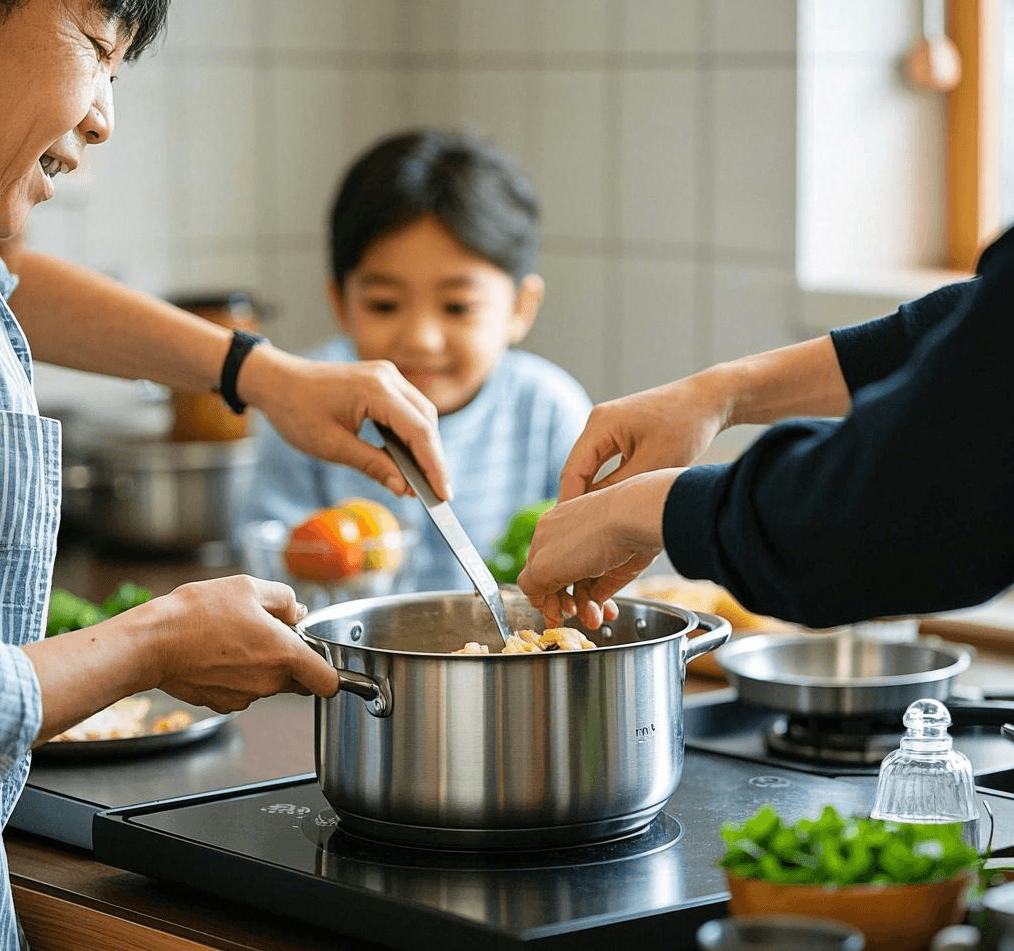
How Does Proper Storage Enhance the Aesthetic Appeal of Triply Cookware?
Triply cookware is not only functional but also adds an aesthetic element to the kitchen—especially with its sleek stainless-steel exterior.
- Protecting the Shine: Storing cookware away from abrasive materials such as rough kitchen towels helps maintain the shine and polished finish of your cookware. Excessive contact with these materials can cause marks or dullness.
- Organized Storage: Organizing cookware in an orderly fashion—such as using dedicated kitchen drawers or shelving—can help protect its exterior from dents or scratches. Ensuring that cookware isn’t tossed into a disorganized cabinet helps maintain its pristine appearance over time. Explore tips for organizing pots and pans.
- Avoiding Overcrowding: Overcrowding storage spaces can cause cookware to rub against each other leading to scratches and loss of shine. Giving each piece ample space and using drawer inserts or hooks can reduce wear on the cookware’s surface.
Proper storage techniques will keep your triply cookware looking as good as new while enhancing its aesthetic appeal.
Claim: Proper Storage Ensures Long-Lasting Quality
Storing triply cookware correctly is essential to ensuring its longevity while maintaining its appearance and preventing damage like scratches, warping, or staining. By investing a little time and care in how you store your cookware, you can enjoy long-term benefits from your premium cookware set.
Conclusion: Careful Storage Extends the Life of Triply Cookware
In conclusion, proper storage is crucial to maintaining the quality and performance of triply cookware. By protecting it from scratches, warping, moisture, and heat, consumers can extend the life of their cookware and continue to enjoy its benefits for many years. Proper care during storage ensures your investment in triply cookware is truly worthwhile.

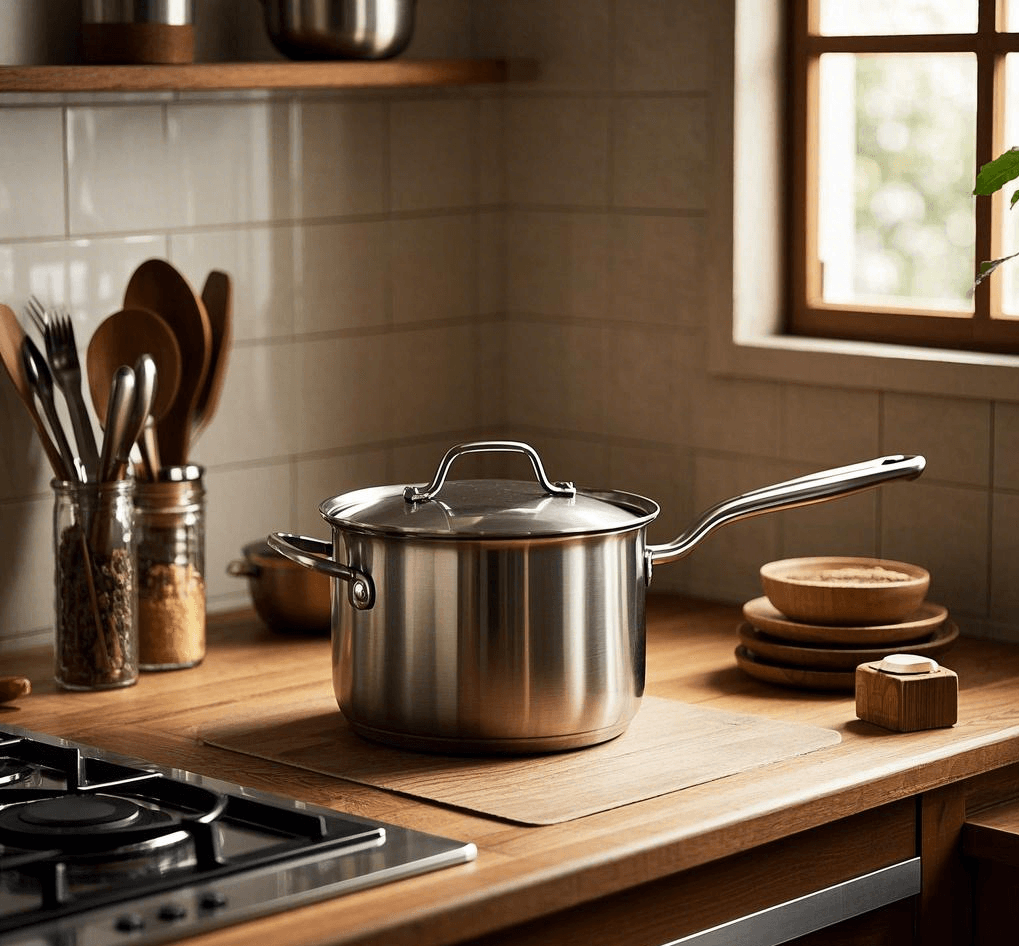

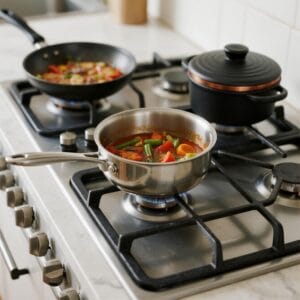
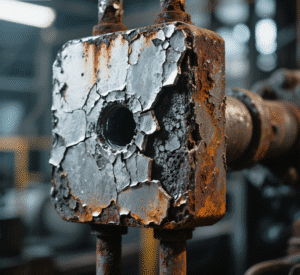
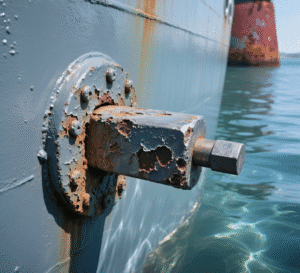

One Response